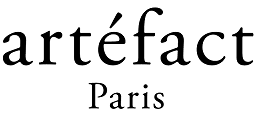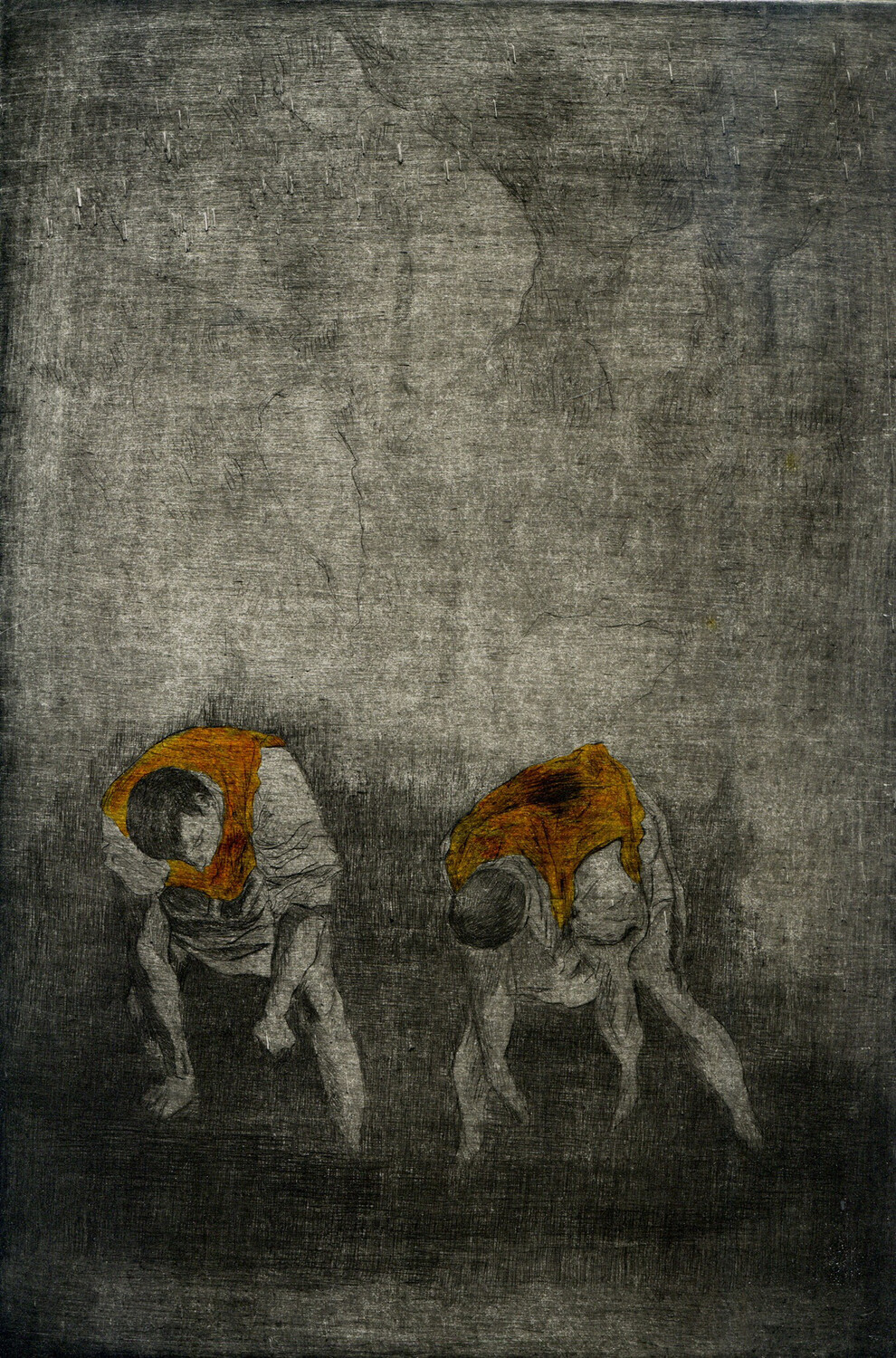Bordures (d'après Le Greco) | Damien Guggenheim
Gravure
Pointe sèche rehaussée
20 x 30 cm
2015
Diplômé de l’École Supérieure des Beaux-arts de Genève en 2004, Damien Guggenheim vit et travaille à Paris. Entre maquettes et installations, il conduit ses réalisations aux croisements du paysage et de l’histoire.
Pour cette exposition, Guggenheim présente une installation autour d’un tableau du Greco. Plan et vue de Tolède (1610-1614) est un des rares tableaux qui n’a pas été commandité au Greco. Il est, autant qu’un paysage, un portrait de son fils qui tend une carte de la ville qu’il a lui-même dessinée. En position d’intercesseur, il montre la ville, indiquant qu’il y a quelque chose à voir, qui redouble le geste même du peintre. Comme dans d’autres tableaux où Le Greco lui-même s’est représenté pour intervenir sur un autre plan de la représentation. Cette répétition laisse à penser qu’il y a surtout quelque chose de dissimulé dans une peinture où par définition tout est rendu visible. Comme à son habitude, Le Greco a peint le paysage de Tolède de nuit, que l’art de peindre restitue comme en plein jour, à l’instar de l’inquisition qui prétendait sonder les âmes. Le plan de la ville est tenue tête en bas (le nord au sud), mais dans le sens de la ville que l’on voit représentée. On remarquera que les anges qui virevoltent au-dessus de la ville, se superposent exactement, à condition de les faire basculer de 180 degrés, au dessin de la ville. Le nuage lui-même, qui est peint à l’envers, semble suggérer cette opération. On constatera alors qu’à la suite de l’enfant, c’est l’aile d’un ange qui semble à son tour indiquer un point (qui reste à creuser) au-delà du Tage.
À côté, Guggenheim présente une série de maquettes. Pour l’artiste, la maquette ne propose pas une anticipation prescriptive ou corrective. Elle n’est pas un modèle-réduit. Elle propose, sans monumentalité, sans utopisme, mais bien à la jonction d’un nom et d’un lieu qui témoigne d’une histoire, de délier une toponymie trop figée, fétichisée. Elle retrouve dans l’objet son invention ou sa découverte : son approximation.
—
artéfact project space is delighted to introduce Damien Guggenheim, an artist who graduated from École Supérieure des Beaux-arts of Geneva, Switzerland, and currently lives and works in Paris. Just as his work spans from models to installations, they dwell in the intersection between landscape and history.
For this exhibition, Guggenheim presents a selection of works displaying his perceptive observations that detail his attention to intricate qualities of existing artworks and mediums. Among them is an installation of a painting from El Greco. View and Plan of Toledo (1610-1614) is one of the rare paintings by El Greco that was not comissioned. It is not only a landscape painting but also a portrait of his son holding out a map of the city that he himself drew. In the position of a middleman, he displays the city, indicating that there is something to see, and in this repetitive act itself he emphasizes the action of the painter – just as in other paintings where El Greco portrays himself to intervene upon another representation. This repetition especially implies something concealed in a painting where by definition, all is made visible. As usual, El Greco painted the nightscape of Toledo as if in broad daylight, alluding to the Spanish Inquisition which claimed to voice the soul of those it controlled. The map of the city is shown upside-down (the north inversed to the south), but pointed in the direction of the city that we see being represented. One notices that the angels twirling above the city overlap exactly with the drawing of the city, if we inverse them by 180 degrees. The cloud itself, painted upside down, seems to be suggesting the same. One may thus note that parallel to the child’s gesture, it is the wing of the angel that seems to indicate an accentuated point beyond the Tagus river.
Alongside this installation, Guggenheim presents a series of models. For the artist, the model is not a small-scale prototype: it is neither a prescription nor does it suggest a corrective form created in anticipation of a greater construction. Instead it suggests, at the juncture of a name and a place bearing witness to history and without monumentality nor utopianism, the untying of a given name that has been overly rigid and fetishized. In the form of a model the invention is rediscovered through its imprecision.
Text by Guggenheim. For more information: damienguggenheim.blogspot.fr
Translation into English : Jing Yi Teo


